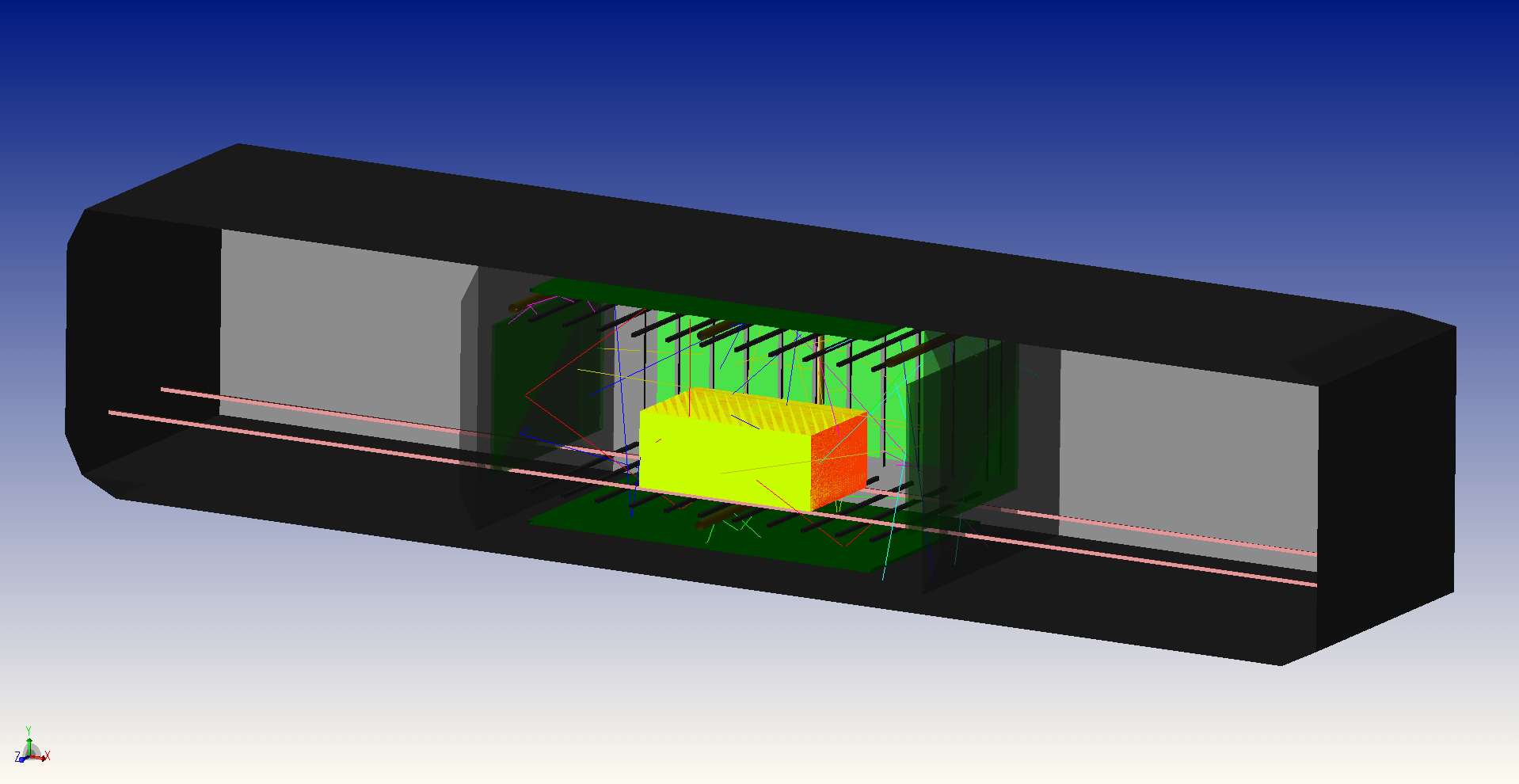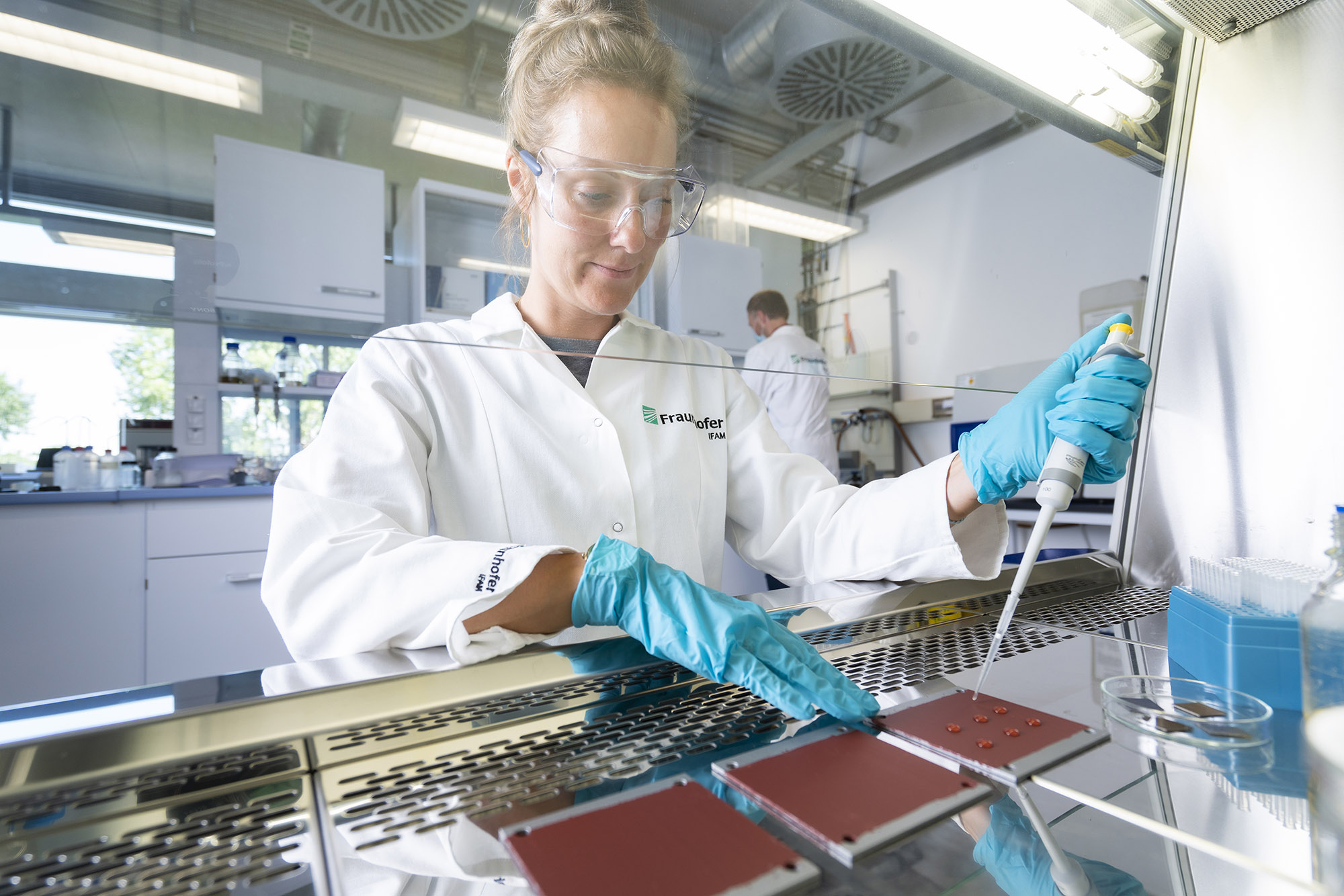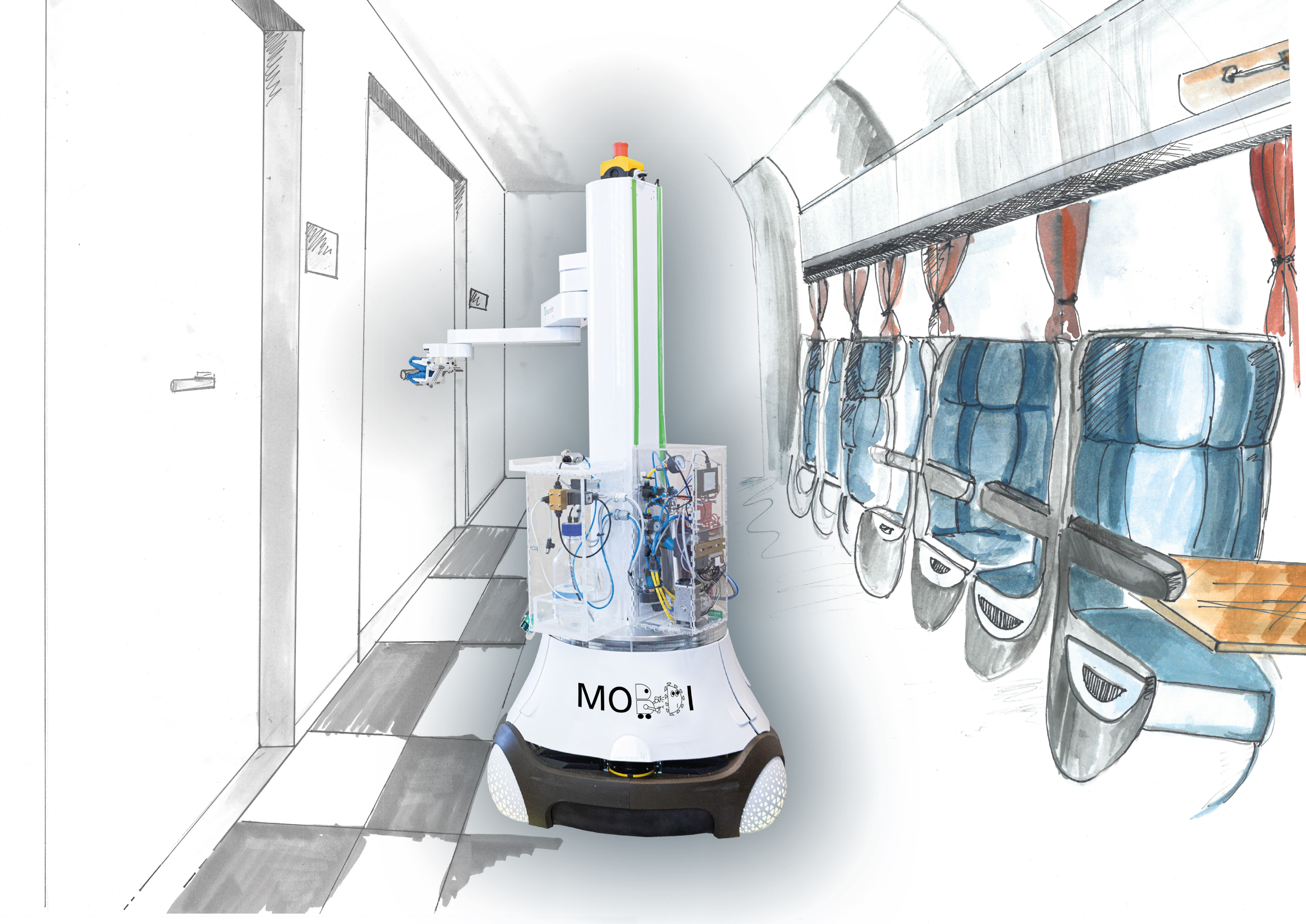Medical Technology and Life Sciences vs. Corona



The Fraunhofer-Gesellschaft is meeting the challenges of the pandemic with a sustainable innovation program. With so-called anti-corona projects from the medical and health sectors, developments are being promoted which can help to overcome the medical crisis. Within this initiative, Fraunhofer IFAM is researching antiviral coatings and disinfecting or sterilizing treatment processes for indoor air. The survival time of viruses is evaluated using state-of-the-art analytics. In addition, concepts for cleaning and disinfection in public transport (PT) and in public buildings using service robots, as well as for mobile and decentralized medical care for the population, are being developed and established.
Antimicrobial surface treatments
Photocatalytic decontamination
Even though the coronavirus is mainly transmitted via droplets and aerosols, contaminated surfaces pose a further risk of transmission. Photocatalytically active coatings with titanium dioxide can help destroy germs on surfaces. To increase the efficiency of this light-driven chemical reaction, a combination of phyllosilicates and copper-doped titanium dioxide photocatalysts was studied. The results showed that this combination of materials produces a synergistic effect, allowing the substances to be degraded to come into contact with the catalysts more effectively and thus decompose more rapidly. The work showed that these photocatalysts actively degrade bacteria. In the "COVID-DEKONT" project, the effect of this patented material approach on viruses is being investigated in order to derive specific material optimizations and to transfer these into a widely applicable coating system.
Dual attack strategy on the inside of coronaviruses
Another research approach to combating the pandemic is being investigated in the "Package Lock" project. This uses a combination of UV radiation and heat to disinfect surfaces of goods. A dual strategy is being pursued in which the protective lipid membrane of the coronaviruses is simultaneously attacked by heat and the nucleic acids in the capsid are modified by UV irradiation. Using ray tracing, a UV emitter configuration can be identified that allows smaller packages to be irradiated on all sides for less than 10 seconds in such a way that a reduction of the viral load by > 99.9 percent is possible.
Mobile robots for combating viruses and bacteria
Mobile service robots for the targeted control of viruses and bacteria are designed to clean and disinfect public transportation and buildings with consistently high quality. Interchangeable tools enable them to wipe, spray and treat surfaces with UV or plasma. Since October 2020, twelve institutions of the Fraunhofer-Gesellschaft have been working on the development of new technologies for these fields of application in the research project "Mobile Disinfection" - "MobDi" for short. The hardware and software development of the cleaning and disinfection robot for use in public transport is the task of the automation and production technology experts at Fraunhofer IFAM. The focus is on the design of a modular drive support to overcome gaps and ledges and the development of a cleaning end effector. For the project validation, the researchers for paint technology as well as adhesives and polymer chemistry contribute their expertise in the development of the disinfection methods by examining as well as evaluating the bacterial or viral load on the untreated and treated surfaces, thus enabling proof of the disinfection success.
Inactivation of viruses in the room air
In addition to cleaning technologies for indoor air, the "AVATOR" project is also investigating the spread of aerosols and deriving hygiene concepts for different applications. The sub-project "Virus-Grill" aims to reduce virus activity in indoor air by means of a novel apparatus. The temperature sensitivity of viruses is the key: heating and holding at inactivation temperature destroys active envelope components of the viruses and inactivates them. With the apparatus to be developed, virus-laden air is aspirated and conditioned. Before the inactivated air is returned to the room, it is recooled to near room temperature. The innovation: The recovered heat is used internally in the system to heat the intake air. This enables very energy-efficient air disinfection. Scientists at Fraunhofer IFAM in Dresden are working on the design and thermodynamic aspects, while the control system for the apparatus is being developed at the Bremen site. Validation tests are taking place in collaboration with Fraunhofer IGB and IBP.
Testing the antiviral efficiency of surfaces
Quantification of viral load by real-time PCR assay
In order to test the functionalized surfaces and treatment processes for their effectiveness and influence on the survival time of viruses, Fraunhofer IFAM in Bremen has added an essential method to a biological laboratory of safety level 2: the investigation and quantification of viral load and virulence. Using classical microbiological tests and state-of-the-art molecular biological analysis, it is now possible to determine the survivability of viruses on different materials - an indispensable tool for the development of novel antimicrobial surfaces. Model viruses are used which, due to their structure, environmental stability and disinfectability, are comparable to common pathogens (e.g. SARS-CoV-2) but are not human pathogens. For analysis, the scientists use real-time PCR (qPCR). This is a method of amplifying nucleic acids that is based on the principle of the conventional polymerase chain reaction (PCR) and additionally enables real-time quantification of the nucleic acids obtained. In this way, a safe, very sensitive and highly reproducible method is now available and thus provides important support for the targeted development of antiviral surfaces and innovative disinfection methods.
Mobile, decentralized medical care
Medical care in crises and disasters
In medical crises, flexibly deployable systems for providing medical care to the population can be a supplement to the existing health infrastructure. Under the auspices of the Fraunhofer IFF, six Fraunhofer institutes have joined forces to develop an integrated system of mobile, decentralized medical care in the "Demo-medVer" project. The special feature: All components of the overall system are modular, closely interconnected and complement each other. All modules are to be standardizable and individually adaptable to different requirements in order to make the system flexible in use and quick to set up and dismantle. In the "FAMOS" sub-project, Fraunhofer IFAM is developing a prototype for battery-powered sterilization for use in humanitarian aid. Flexible and mains-independent sterilizers and autoclaves should lead to further viral or even bacterial protection for people. The aim of the second sub-project "O2GEN" of the Dresden branch of the institute is to build and test a novel prototype device for the generation and controlled delivery of pure oxygen (> 95 percent by volume). The device can deliver pure oxygen with up to 100 percent relative humidity to a consumer, such as a ventilator. The oxygen is produced by water electrolysis, which draws the reactant water from a storage tank that also has a connection to an external water source. The hydrogen produced in parallel by the water electrolysis is immediately converted back to water via a fuel cell unit using atmospheric oxygen (21% O2 by volume) from the environment. This can in turn be used for electrolysis by balancing the water via a water tank and a piping system. The additional connection to an external power source, e.g. mains alternating current, ensures that there is always sufficient electrical energy to operate the oxygen generator.
 Fraunhofer Institute for Manufacturing Technology and Advanced Materials IFAM
Fraunhofer Institute for Manufacturing Technology and Advanced Materials IFAM